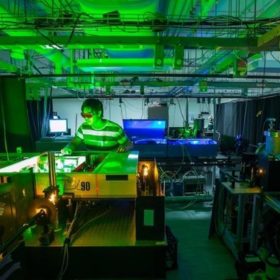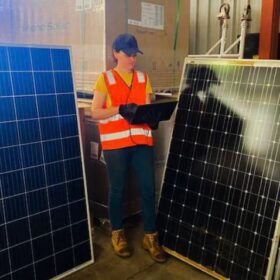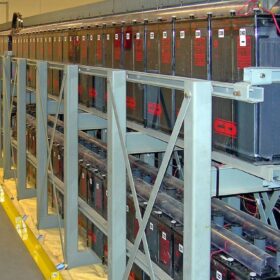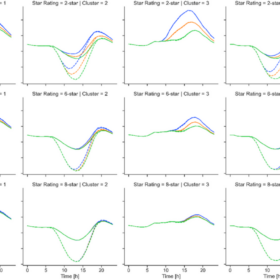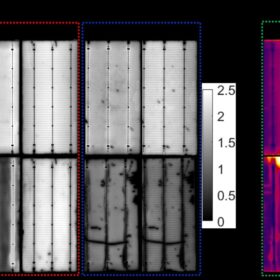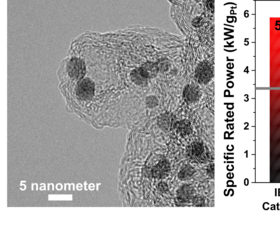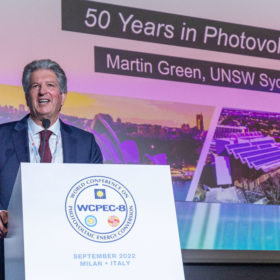UNSW team make discovery they say could push solar’s efficiency limit beyond 40%
UNSW researchers have found a new approach to photochemical upconversion, which involves converting low light particles into higher-energy light particles. The discovery has potential to unlock innovations in renewable energy, particularly solar, with the team flagging it could raise the efficiency limit of solar devices from 33.7% to 40% or beyond.
How to build, finance product stewardship scheme for solar panels
Researchers in Australia have provided a series of recommendations to set up regulatory frameworks for PV module recycling and reuse. They said that, as a rule of thumb, landfill bans, tracking of the panels’ serial numbers, and a clear definition of ownership should always be included in the legislation for end-of-life solar products.
Distributed PV, battery storage curtailment in low-voltage networks
University of New South Wales (UNSW) researchers have looked at energy losses in South Australia and have identified average curtailment of 1.5% for distributed PV sites and 0.2% for distributed PV coupled with batteries, but some locations experience generation losses of up to 25%.
Mitigating residential duck curve via solar pre-cooling
Solar pre-cooling consists of using residential PV systems to run air conditioners to pre-cool residential and commercial buildings. It offers benefits in terms of mitigating low minimum demand in electricity networks, flattening the grid’s net demand profile, and reducing electricity bills.
All solar cell efficiencies at a glance – Martin Green team update
The research group led by Professor Martin Green has published Version 62 of the solar cell efficiency tables. There are 21 new results reported in the new version, a record number for the Tables.
Australian scientists warn of heat-induced failure risks in HJT glass-backsheet PV modules
University of New South Wales researchers have identified four failure modes caused by damp heat in heterojunction solar panels with a glass-back sheet configuration. The failures could result in power losses ranging from 5% to 50%.
Weekend read: Solar’s supply-chain pioneer
Zhengrong Shi and his company, Suntech, are true pioneers of the Chinese solar industry. While Suntech burned bright, and eventually flamed out, under Shi’s leadership, the company’s solar ecosystem and innovation persist as China’s PV market surges past 100 GW(AC) today.
Novel design for high-power PEM fuel cells
UNSW Sydney researchers have developed an algorithm to enhance images of PEM fuel cells, meanwhile South Korean researchers have revealed a scalable production method for platinum-based fuel cell catalysts. Germany has moved forward on its hydrogen strategy by signing agreements with Australia, Belgium, and the Netherlands.
Globally esteemed engineering award given to Australian research team
The prestigious Queen Elizabeth Prize for Engineering has this year been awarded to the University of New South Wales’ Professor Martin Green, Dr Aihua Wang and Dr Jianhua Zhao, as well as the Australian National University’s Professor Andrew Blakers, for their research work and development of PERC solar technology.
Perovskite PV tipped to become competitive in rooftop segment
Scientists from Australia are among an international team of researchers that predict lightweight, high-performance perovskite solar modules could soon become competitive with crystalline PV modules in the residential segment, as such products will likely have lower manufacturing and balance-of-system costs in the future.
